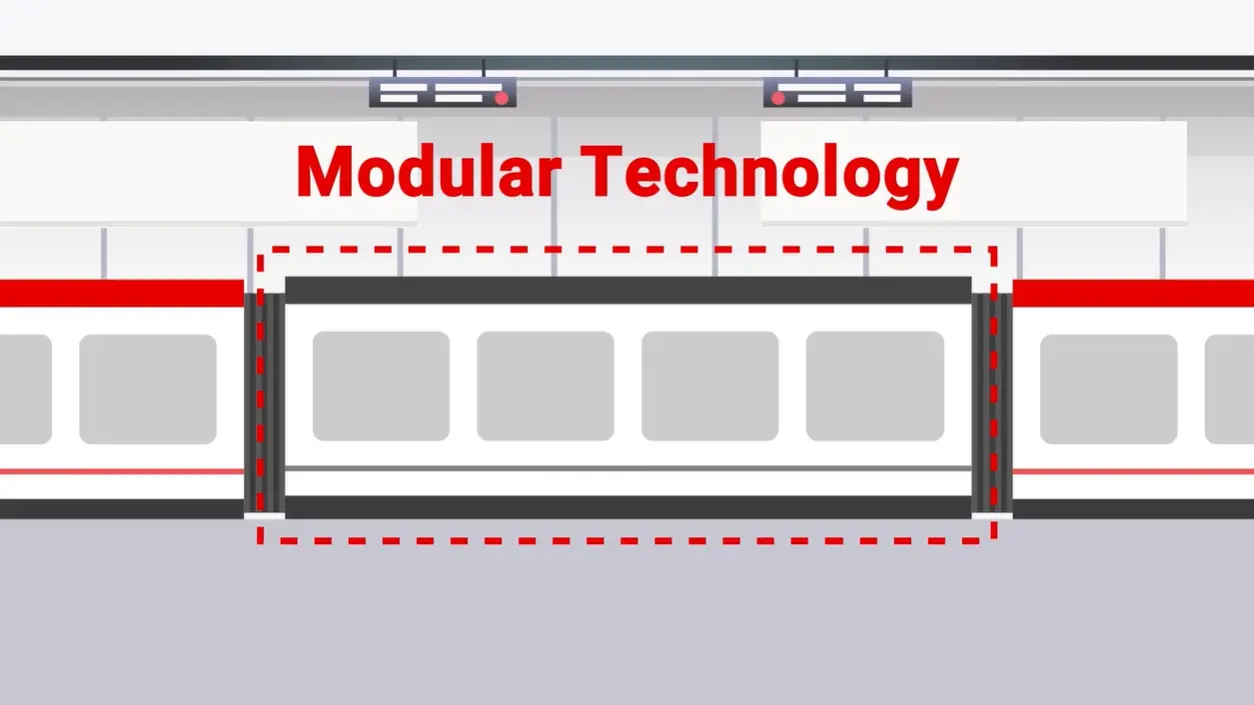In this Article:
- What is modularity?
- Benefits of modularity for airlines
- Beyond technical modularity
- Explore SabreMosaic
Change is the only constant
As consumer expectations have skyrocketed across all verticals, the airline industry has come under increasing pressure to keep pace. Systems and processes developed many years ago are coping with modern travel demands that they were never designed to accommodate.
To meet the evolving needs of travelers and open new revenue opportunities, a more advanced approach is required – along with new technology to enable it. Enter offer- and order-based airline retailing with SabreMosaic. Sabre has set out our vision for a smarter approach to airline retailing and at the core of the tech that underpins it is a microservice-native architecture that supports modularity.
What is modularity?
A great example of modularity is the ‘Tube’ – the nickname for London’s underground transit system. There are just two standard train carriage sizes on a network that covers an area of more than 800 square miles, carrying 1.3bn passengers each year between 272 Tube stations. These carriages can easily be added, removed or switched out as required to facilitate maintenance, carry out safety checks or optimize train capacity. The standardization and flexibility of the system – or its modularity – is fundamental to keeping the Tube operating with speed and at scale.

The same modularity principle applies to the tech world. By subdividing a system into smaller parts, these modules can be independently created, modified, replaced or exchanged between different systems – thereby increasing flexibility and improving efficiency.
Whereas monolithic systems lack the agility, flexibility and scalability that many modern businesses (including airlines) require, modular systems are built to work in modern, diverse technical ecosystems. Monolithic airline systems are challenged to keep up with the complexities of air travel today – modularity is the solution for handling increased complexity.
We’re also seeing that the way airlines want to consume and build around technology has evolved in line with this drive towards a modular approach.
Benefits of modularity for airlines
There are many reasons we built SabreMosaic to be fully modular. The top three are:
1. Reusability
Modules have reusable API definitions based on IATA standards, meaning there is consistency in the APIs that makes it easier to integrate and even reuse components that are built on top of them. This eliminates the need to build new components every time a new application needs to be integrated or a new functionality is introduced.
It saves time and effort, creating an infrastructure which is designed to be more adaptable to change. Reusable APIs also provide greater consistency and ‘composability’. Composable systems encourage flexibility by ensuring components can be selected and assembled in various combinations to satisfy specific user requirements.
Let’s take a look at the Offer Orchestration product within the Offer Management suite of SabreMosaic. This multi-domain orchestration service allows flexible flows of data between systems to fulfill offer creation through a single API. The “everything-as-a-plug-in” design allows reuse of capabilities between use cases and ease of extensibility for the future.
Small, API-driven modules (instead of monoliths) are quick and easy to change, improving speed to market in addition to driving best practice and governance.
2. Flexibility
Individual modules, as well as the products and capabilities within the modules, are designed to allow the airline flexibility as they integrate them into their existing ecosystem. There is no longer a need to change what is working well when deciding to extend capabilities with one of the modules – meaning the integration is easier and less expensive. Using the London Tube analogy, modularity means upgrading a single carriage doesn’t impact the rest of the train, which can stay fully-functional and in service. The new or upgraded carriage – or ‘module’ – can then be put back into service or reintegrated seamlessly when ready.
As airlines look to modernize their retailing strategies, the traditional airport experience comes to mind. With offers and orders, airlines can completely rethink what the travel journey looks like. With the Delivery Management suite of SabreMosaic, airlines can prioritize those products and capabilities that enable a more modern travel experience without disrupting other areas of their business that are working well.
The modular SabreMosaic Airports product infuses intelligence into essential functions of departure control to provide biometric-enabled check-in and increase opportunities to automate once laborious processes of travel. Managing essential functions of departure control, SabreMosaic Airports drives efficiency and traveler satisfaction. It is offered as a GUI or has the flexibility to be offered via an API for an airline to connect those core functions to their own GUI. The level of modularity enabled is truly at the airline’s choosing.

Modules have built-in overload protection to enhance reliability and provide airlines with granular access so they can apply specialized features as appropriate for their organization. Operational efficiency can be improved through fully configurable, cloud-native modules.
3. Standardization
Modules are designed with monitoring and efficiency in mind. Standardizing APIs ensures that modules can communicate effectively, allowing developers to create interoperable software components. Each module of SabreMosaic comprises microservices dedicated to a specific function or task. This makes them easy to monitor and ensures issues can be isolated and resolved quickly, thereby improving efficiency and minimizing downtime.
Beyond technical modularity
A modular approach to tech architecture has become accepted best practice within the IT world; it’s how most leading companies in other industries now build software, and in that sense the airline industry is playing catch-up. It’s also worth noting that modularity is very well suited to the cloud environment. We built our open, modular and cloud-native SabreMosaic retailing platform in partnership with Google, which provides our airline partners with superior scalability and security.
But we went a step further than just technical modularity and built with commercial modularity in mind – we’re making SabreMosaic available to airlines on a module-by-module basis as we believe that’s in the best interest of the wider industry. Our ‘pick and play’ utility will enable airlines to build tailored solutions by choosing the individual modules that are best suited to achieving their chosen goals.

Your journey starts here
Our ten modular technology suites are here and ready to work. Sabre is committed to this flexible approach so you can take your airline to the new world of Offers and Orders. Choose the components you are ready for now. Add more later. It is up to you.
The concept of ‘openness’ – of airlines being able to select and combine modules developed in-house, built by Sabre or procured from third parties to create a customized solution – promotes innovation across the industry, goes hand-in-hand with modularity and lies at the heart of Sabre’s next-gen solutions. If you enjoyed this article, look out for our upcoming deep dive into the many benefits of an open ecosystem.





